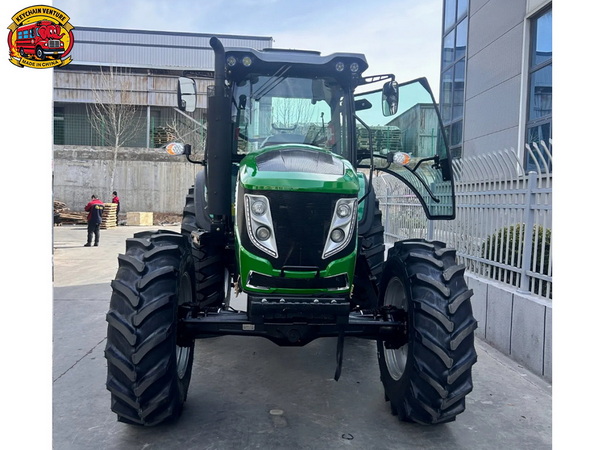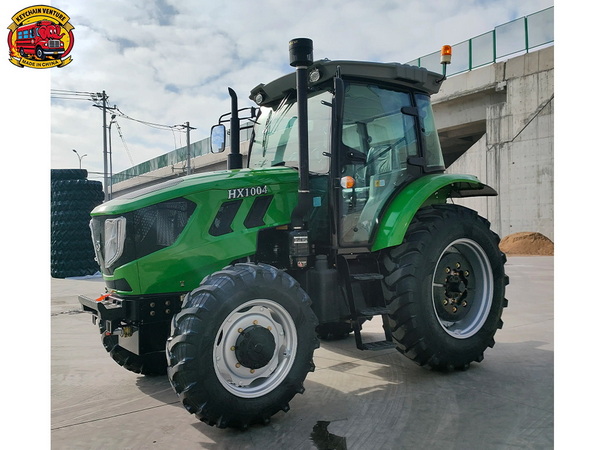







Content Menu
● Understanding the Purpose of a Tractor
● Types of Tractors and Their Speed Ranges
>> Industrial and Heavy-Duty Tractors
>> Specialty Tractors and Racing Tractors
● Factors Affecting Tractor Speed
● Technological Advances Increasing Tractor Speed
● Safety Considerations When Driving Fast with a Tractor
● How Fast Can KeyChain Venture Co., Ltd. Tractors Go?
● Historical Context: Tractor Speeds Over Time
● Differences Between Tractors and Other Agricultural Vehicles
● Factors Influencing Tractor Speed Limits Legally
● Future Trends in Tractor Speed and Design
>> (1) What is the usual top speed of a farm tractor?
>> (2) Can tractors be modified to go faster?
>> (3) What factors limit a tractor's speed?
>> (4) Are high-speed tractors safe to operate?
>> (5) How does KeyChain Venture Co., Ltd. ensure efficient tractor speeds?
Tractors have been an indispensable part of agriculture and industry around the world for over a century. While they are primarily designed for power and durability rather than speed, many people often wonder, "How fast can a tractor go?" This article explores the speed capabilities of various types of tractors, factors that influence their speed, technological advancements, and safety considerations.

Before delving into the speed aspect, it's essential to understand the core function of a tractor. A tractor is a powerful vehicle built to deliver high torque at low speeds to perform tasks such as plowing, tilling, planting, and hauling heavy loads. Unlike cars or trucks designed for travel, tractors prioritize pulling power and stability over high speed.
The speed of a tractor varies significantly depending on its design and intended use. Here are the main types and typical speed ranges:
Farm tractors are the most common type, used extensively in agriculture. Most modern farm tractors have maximum speeds between 25 to 40 miles per hour (40 to 65 km/h).
- Smaller compact tractors generally reach speeds closer to 15-25 mph.
- Larger, high-powered farm tractors used for extensive fieldwork can achieve 30-40 mph on flat terrain.
Utility tractors are versatile machines used in farming, construction, and landscaping. They tend to have speed ranges from 20 to 30 mph (32 to 48 km/h).
Industrial tractors, such as those used in mining or heavy haulage, prioritize pulling capacity over speed. Their maximum speeds typically remain under 25 mph (40 km/h).
In some cases, tractors are modified expressly for speed. Tractor pulling competitions showcase specialized machines with extreme horsepower and modified engines that can exceed speeds of 100 mph (160 km/h) during competitions on tracks.
Several factors influence how fast a tractor can go:
Tractors are equipped with engines designed for torque rather than high-speed horsepower. The larger and more powerful the engine, the more potential there is for higher speeds, although engine tuning is optimized for pulling.
Modern tractors use advanced transmissions:
- Manual transmissions offer control but may limit speed.
- Hydrostatic transmissions allow smooth speed variation but typically have lower maximum speeds.
- Continuously Variable Transmissions (CVT) provide optimal speed and efficiency, enabling tractors to reach higher speeds safely.
The type of terrain (flat, hilly, muddy) and the weight of the load greatly affect speed. Tractors slow down considerably when hauling heavy equipment or driving uphill.
Larger tires can increase ground clearance and potentially speed, but tractor tires prioritize traction and stability.

In recent years, technological breakthroughs have improved tractor speed capabilities without sacrificing power:
- GPS and Auto-Steering Systems: Precise navigation reduces overlap and wasted time, indirectly improving operational speed.
- Engine Efficiency Improvements: Hybrid and electric tractors promise smoother acceleration and faster speeds.
- High-Speed Tractor Models: Manufacturers like John Deere and New Holland have produced models with top speeds exceeding 40 mph, suitable for quick transport between fields.
While faster tractors can increase productivity, safety remains paramount:
- Tractors lack the stability and braking systems of cars.
- Driving too fast on uneven terrain increases rollover risks.
- Operators should use rollover protection structures (ROPS) and wear seat belts.
- Speed should always be adjusted according to load and surface conditions.
As a leading Chinese supplier of commercial vehicles, including high-performance tractors, KeyChain Venture Co., Ltd. engineers tractors that balance reliable power with efficient transport speeds. Their mid to large-sized models typically achieve speeds from 25 to 35 mph, optimized for domestic and international agricultural needs.
The history of tractor speeds mirrors advancements in engineering and agricultural requirements. Early tractors from the early 20th century moved slowly at around 5-10 mph, prioritizing durability and pulling power in the age of mechanical farming. As roads improved and multi-purpose tractors became common in the mid-20th century, speeds gradually increased to 15-25 mph.
Today's modern tractors combine power, speed, and efficiency to support large-scale farming operations where rapid transport between fields and roadways is necessary. The evolution continues as electronic controls and alternative energy sources reshape tractor capabilities.
While tractors are versatile, several agricultural vehicles surpass their speed or are designed for specific transport roles:
- Combine Harvesters: Often feature higher travel speeds than tractors, reaching up to 30 mph.
- ATVs and Utility Vehicles: Smaller and faster, but limited in power compared to tractors.
- Self-Propelled Sprayers: Built for field efficiency and can reach speeds above 25 mph.
Understanding the tractor's role versus these vehicles highlights why speed is often a secondary concern for tractors compared to durability and torque.
Many countries impose speed limits on tractors when driven on public roads. These limits can range from 25 to 40 mph depending on the region, road type, and tractor classification. Compliance ensures safety for operators and other road users.
Local regulations may also require specific lighting, signage, or escort vehicles for tractors traveling faster than typical farm speeds to enhance visibility and reduce accidents.
The future promises continued innovation in tractor speed and operation:
- Electric and Hybrid Tractors: Offer potential for faster acceleration and quiet operation.
- Autonomous Tractors: Automated guidance systems may maintain constant optimum speeds suited to terrain, maximizing efficiency without compromising safety.
- Modular Designs: Customizable tractors adapting speed and power based on task demands.
These trends aim to reduce operator fatigue, improve productivity, and enhance safety on the farm.
Tractors, while traditionally slow-moving workhorses designed for toughness and torque, have seen advancements enabling higher speeds safely. Most tractors reach up to 40 mph under ideal conditions, with specialty racing tractors exceeding this significantly. With careful design, the right engine and transmission setup, and adherence to safety protocols, tractors fulfill the growing need for speed without sacrificing their primary function of power and reliability. At KeyChain Venture Co., Ltd., tractors are engineered to balance speed with durability, serving agricultural markets globally with high-performance solutions.

Most farm tractors have top speeds ranging from 25 to 40 mph, depending on engine power and load.
Yes, tractor pulling teams and hobbyists tune engines and modify tractors to exceed 100 mph for performances and competitions.
Terrain, load, tire type, and transmission play significant roles in limiting tractor speed.
With proper safety features like ROPS, seat belts, and cautious driving, high-speed tractors can be used safely.
By integrating advanced engine designs and transmissions, KeyChain Venture Co., Ltd. produces tractors that optimize speed and power for diverse applications.